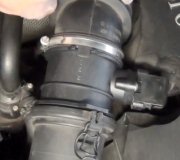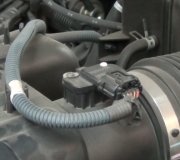The oxygen sensor could be locked-up in the open loop mode not switching to closed loop. Also the coolant temperature sensor will do the same-
If the your converter is plugged, it will create a restriction in your exhaust system. The buildup of backpressure will cause a drastic drop in engine performance and fuel economy, and may even cause the engine to stall after it starts if the blockage is severe.
The easiest test for converter plugging is done with a vacuum gauge. Connect the gauge to a source of intake vacuum on the intake manifold, carburetor or throttle body. Note the reading at idle, then raise and hold engine speed at 2,500. The needle will drop when you first open the throttle, but should then rise and stabilize. If the vacuum reading starts to drop, pressure may be backing up in the exhaust system.
You can also try to measure backpressure directly. If your engine has air injection, disconnect the check valve from the distribution manifold, and connect a low pressure gauge. Or, remove the oxygen sensor and take your reading at its hole in the manifold or headpipe. Refer to the backpressure specs for the application. Generally speaking, more than 1.25 psi of backpressure at idle, or more than 3 psi at 2,000 rpm tells you there's an exhaust restriction.
If there appears to be an exhaust restriction, disconnect the exhaust pipe just aft of the converter to relieve pressure and recheck the readings. CAUTION: The pipes will be hot so wait awhile for things to cool down. If vacuum goes up and/or backpressure drops, the problem isn't not a plugged converter but a plugged muffler or collapsed pipe. If there's little or no change in readings, the converter is plugged.
Monday, November 17th, 2008 AT 4:30 PM



